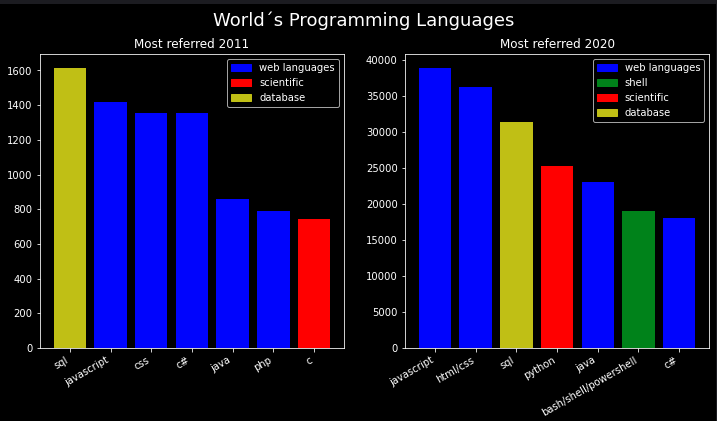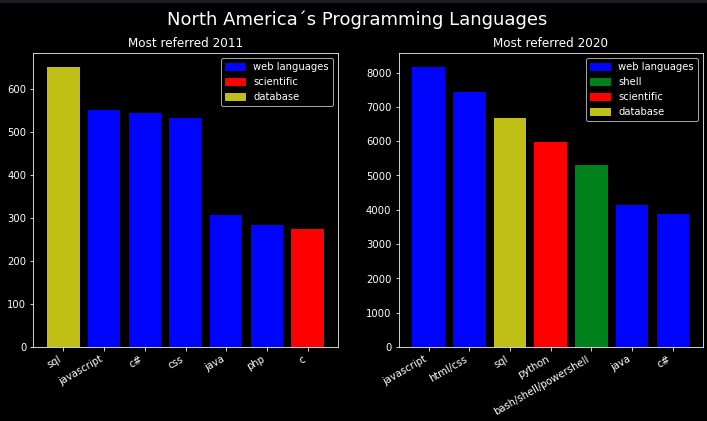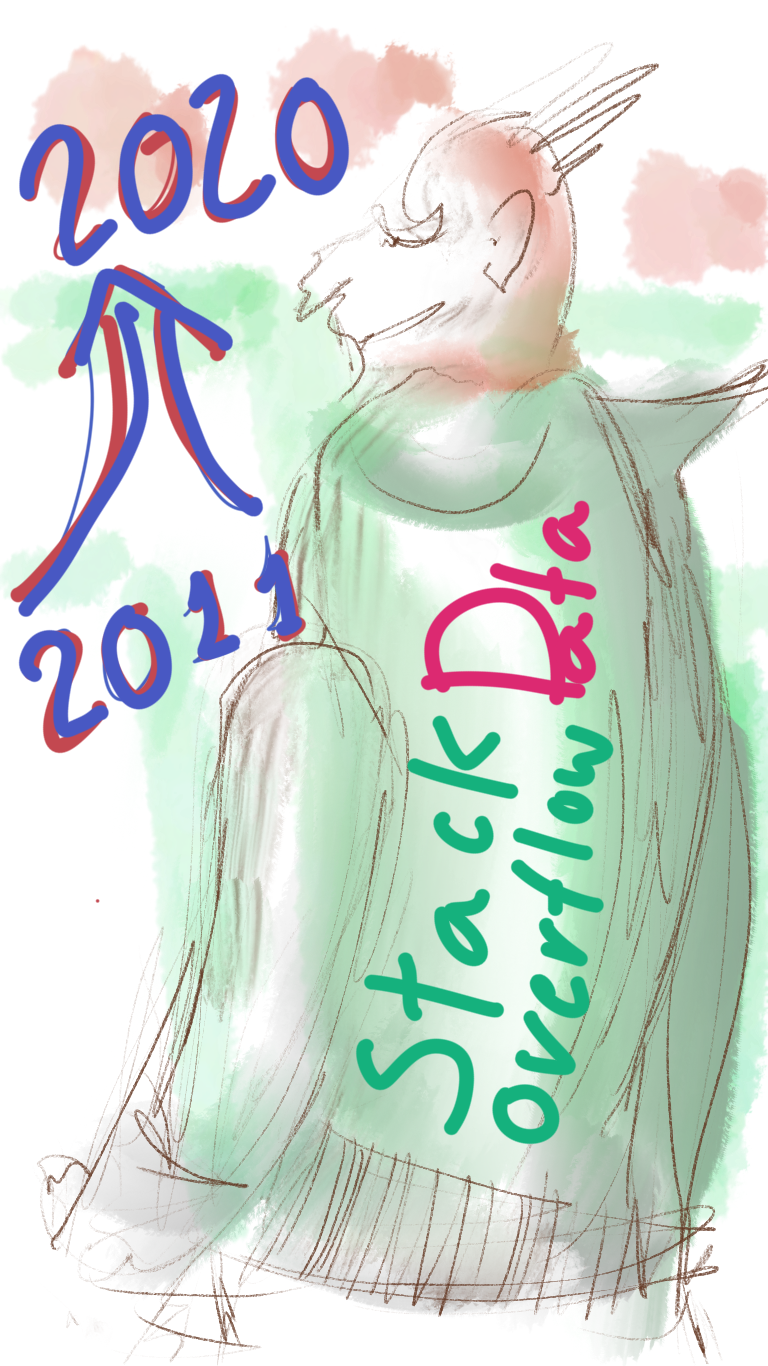First-Udacity-Datascience-Blog
My first blog, for Udacity Datascience course, first commitment.
Project maintained by epasseto Hosted on GitHub Pages — Theme by mattgraham
Stack Overflow Survey 2011 Vs 2020

So many things changed in the world in this time… and Stack Overflow questions & answers for programmers has being growing so much…
Introduction
This work is based on public data. I got both .csv at Stack Overflow Website (link above). The idea was to compare Programming Languages preferences on two time windows spaced by 9 years.
Stack Overflow is a website about submiting programming languages code that is not working and giving some information about what you are pretending. People try to correct your code, giving you some explanations about it. For starters, its a kindo of paradise!
And for more experienced persons, it is nice too. You can use your good answers as a visit card.
It is very dynamic and in constant growth environment:
- in this nine years, counts about referred languages by surveyers had an increment of more than 20 times;
- as it captures in yearly surveys almost new programmers, it can point what are the tendencies for a near future, about programming;
- it is not only about counting programming languages, the idea is try to classify them in general blocks (as scientific/development purpose, web applications, etc..);
The most challenging part was to adapt both .csv files for a common format, for data extraction. It was not so easy, as the 2011 ans 2020 surveys follows quite different structures. On my Jupyter Notebook I created a lot of functions for general dataframes adaptation (Pandas). All my code was written in Python 3.X. And these functions were collected in a library, named udacours.py. All this coding is under MIT licence. So, please use it as you wish!
Question 1 - How programming languages preference seemed to evolve 2011 vs 2020?
Explanation:
- 2011 the most referred language at Stack Overflow was for database purposes;
- 2011 it was followed by several web languages, and then as a scientific language, most referred was C;
- 2020 shows a tendency for more enphasys in fewer web langages, followed by a database language;
- 2020 shows a clear preference for Python, instead of C. And now it appears in the forth position;
- 2020 gives us a general feeling that new programmers are trying Python. One possible explanation is that Python is referred as a easy to learn programming language.

Question 2 - How North America differs from the rest of the world?
Explanation:
- when I was young, North America was known as the world influencer;
- so if something happened there, it will likely be the new tendency for other countries;
- as it takes some time for influences to spread all over the world, it is expected that filtering for US you could obtain a more futuristic shape;
- it seemed that it was not the case anymore, as new technologies are spreading so fast, the world tendency curiously seems to be the same for US and for the summation of all the countries in the world.

Question 3 - And about Z-Generation?
Explanation:
- Z Generation, or Gen Z are known as zoomers, a generation that had contact with new IT technologies even in very young age;
- a better explanation about zoomers can be found at Wikipedia;
- as human generations are time-dependent, it is impossible to compare 2011-2020 data. The only thing to do is to show the 2020 filtered data and take some possible conclusions;
- and the general tendency is for two strong web languages (as newspapers are giving place to weblogs), followed to Python in third, and referring two more scientific languages;
- so if we rely on these data, we can assume a strong preference for web languages (frontend), followed by scientific languages (for most diverse purposes);
- SQL (database language) seems to remain important for this generation too!

Conclusion
We can see a strong tendency for technological concentration in fewer solutions. A real-time spreading of new paradigms (so the cultural gap between nore advanced cultures and the rest of the world tends to disappear). And a strong preference at zoomers for website solutions, scientific languages, and in some points, for database structures.
How reliable is this data?
- it is based only on one website, speciallized on giving support for new kids in the block;
- so, data is clearly biased, but if you consider the purpose of this website, you star formulating new world tendencies for programming languages, in a near future
- other inferences, as the relation of NaN data over the entire survey, you can find in the Jupyter Notebook that follows this project;
- another point to say is that this language classification is a bit arbitrary, I made it based only on my work practice as an Engineer working for Brazillian Government, it is only for illustration purpose about programming langages tendencies.
How about seeing how answers changed between this two time windows?
Hom many people referred to Python, or to SQL in this time lapse?

Let´s see some answers for this, and other questions in my project!
Link for maintaining the content of this blog here
After commitig, Website rebuilt page here
Markdown and other GitHub environmental details for this blog
This Webpage is formatted using Markdown
For more details see GitHub Flavored Markdown
GitHub support can be found here
GitHub documentation is here
Udacity DataScience ND025 course can be found here
This Webpage is based on Jekyll theme Midnight, that you can find here